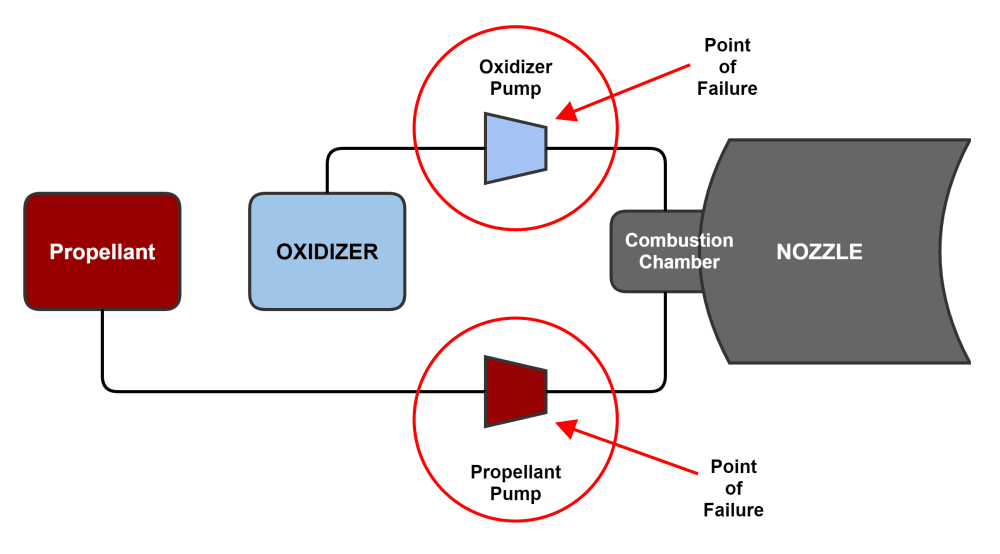INTRODUCTION:
Blade fatigue, due to cavitation in rocket engine turbopumps, often triggers catastrophic system failures, costing backers of space missions, launch vehicle operators and their customers millions of dollars every year. The Next Planet Research VFI-689M System has the potential for reducing pump failures by optimizing launch vehicle performance and improving safety margins.
PROBLEM:
The combined effects of hydrodynamic cavitation, unbalanced rotordynamic forces, and accumulation of turbopump operational efficiency losses can trigger a cascade of rocket motor propellant fuel feed subsystem and component malfunctions that can result in catastrophic failure.
Rapidly dropping pressure in the turbopump’s volute, as the fluid mixes with the impeller produces vapor cavities or bubbles. Ultralow pressure causes the bubbles to collapse, producing a cycle of intense shockwaves. This cycle of implosions corrodes the impeller blades, rotor hub and casing; exploiting areas where hydrodynamic, disk-friction and leakage losses occur. Weakening of the impeller blades due to fluid instabilities, forces the supporting rotor platform into erratic oscillations causing undesired vibrations in the turbopump system and failing.
SOLUTION:
The VFI-689M system architecture consists of three interdependent structural components that work in concert to balance the pressure forces in the volute - the rotordynamic forces produced by the accelerating hub plate (rotor platform), monovane and flow channel.
The VFI-689M’s spherical superstructure provides a system platform and attachment points for the substructure mass center and metastructure complex, providing suction surfaces and a secondary gravity damping feature.
The centrally located substructure contains the VFI-689M’s thermoregulation system and primary gravity damping feature. The thermoregulation system helps maintain consistent temperatures, contributing to fluid stability inside the turbopump case. The gravity damping features reduces vibrations caused by high-velocity rotation by maintaining the impeller’s weight and balance.
The spiraling metastructure flow channel complex is a single sinusoidal quadrahelix that winds about the superstructure’s axis of rotation and provides an inverted hydrofoil monovane configuration. These quadrahelical metastructure contains and harnesses the flow field; optimizing suction, reducing vorticity, lowering occurrences of hydrodynamic cavitation and pumping fluids at lower RPM’s, thus requiring less power.
MANUFACTURING:
Producing the VFI-689M requires a subtractive manufacturing strategy, a multiaxis machining process capable of rendering complex geometric objects. The VFI-689M reveals multiple freeform surfaces—it contains a quadrahelix flow channel spiraling about the axis of a sphere solid.
The most efficient approach to “finish machine” the VFI is to direct a 5-axis CNC machine tool in a spiral around the flow channel area. Multiaxis machining saves time and eliminates mistakes that can be made with processes that require numerous setups.
OPPORTUNITY:
The VFI-689M / Cavitation Resistant Vortex Force Monovane Centrifugal Turbopump Rotor Assembly is designed to support a launch system reusability model.
Likewise, the VFI-689M system can be configured to produce mechanical energy or electrical power thus allowing for the potential of additional vertical markets.
CONCLUSION:
The Next Planet Research VFI-689M turbopump system is a world-class propellant/oxidizer feed solution that shows great promise for providing safer passage to space, saving launch systems manufacturers and their customers millions of dollars in unforeseen annual costs.
Like this entry?
-
About the Entrant
- Name:David Dranchak
- Type of entry:individual
- Patent status:pending

